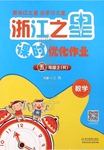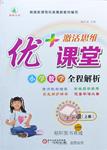题目内容
The 1980s was called the “Me Decade” because for many this time was marked by a fascination with the self. The idea that each person has a self may seem natuaral to us, but this concept is actually quite new. The idea that each human life is unique developed between the 11th and 15th centuries in Europe. Before that time, individuals were considered in relation to a group, and even today, many eastern cultures place more emphasis on the importance of a collective self than on a unique and independent self.
Both eastern and western cultures see the self as divided into an inner, private self and an outer, public self. But where they differ is in terms of which part is seen as the“real you.” Western culture tends to promote the idea of individuality—a self that is separated from other selves. In contrast, many eastern cultures focus on an inter-independent self that gets its diversity in large part from inter-relationship with others.
For example, a Confucian(孔子) idea stresses the importance of “face”—other people’s views of the self and maintaining one’s desired status in their eyes. In the past, some Asian cultures developed clear rules about the specific clothes and even colors that people in certain social classes and occupations were allowed to display, and these live on today in Japanese style manuals. This style of dress is at odds with such western practices as “casual Fridays,” which encourage employees to dress informally and express their unique selves.
1. Which is true about the self according to the text?
A. Many eastern cultures see the self connected with others.
B. Those born in the 1980s are generally most self-centered than others.
C. The concept that eac person has a self may seem strange to eastern cultures
D. Western cultures regard the self as an outer, public self while eastern cultures don’t.
2. What does the 2nd paragraph mainly talk about?
A. How eastern and western cultures see the self.
B. Eastern cultures contrast sharply with western cultures
C. Both eastern and western cultures appreciate the importance of self
D. Eastern cultures are as important as western cultures
3. A Japanese dress code is mentioned in the last paragraph to _________.
A. explain the importance of “face”
B. say how traditional the Japanese are
C. emphasize the importance of eastern cultures
D. show how eastern cultures see the self in relation to others
4. The underlined phrase “at odds with” most probably means_______.
A. in agreement with B. in disagreement with
C. in comparison with D. in need of
1.A2.A3.D4.B
【解析】略

 浙江之星课时优化作业系列答案
浙江之星课时优化作业系列答案 激活思维优加课堂系列答案
激活思维优加课堂系列答案